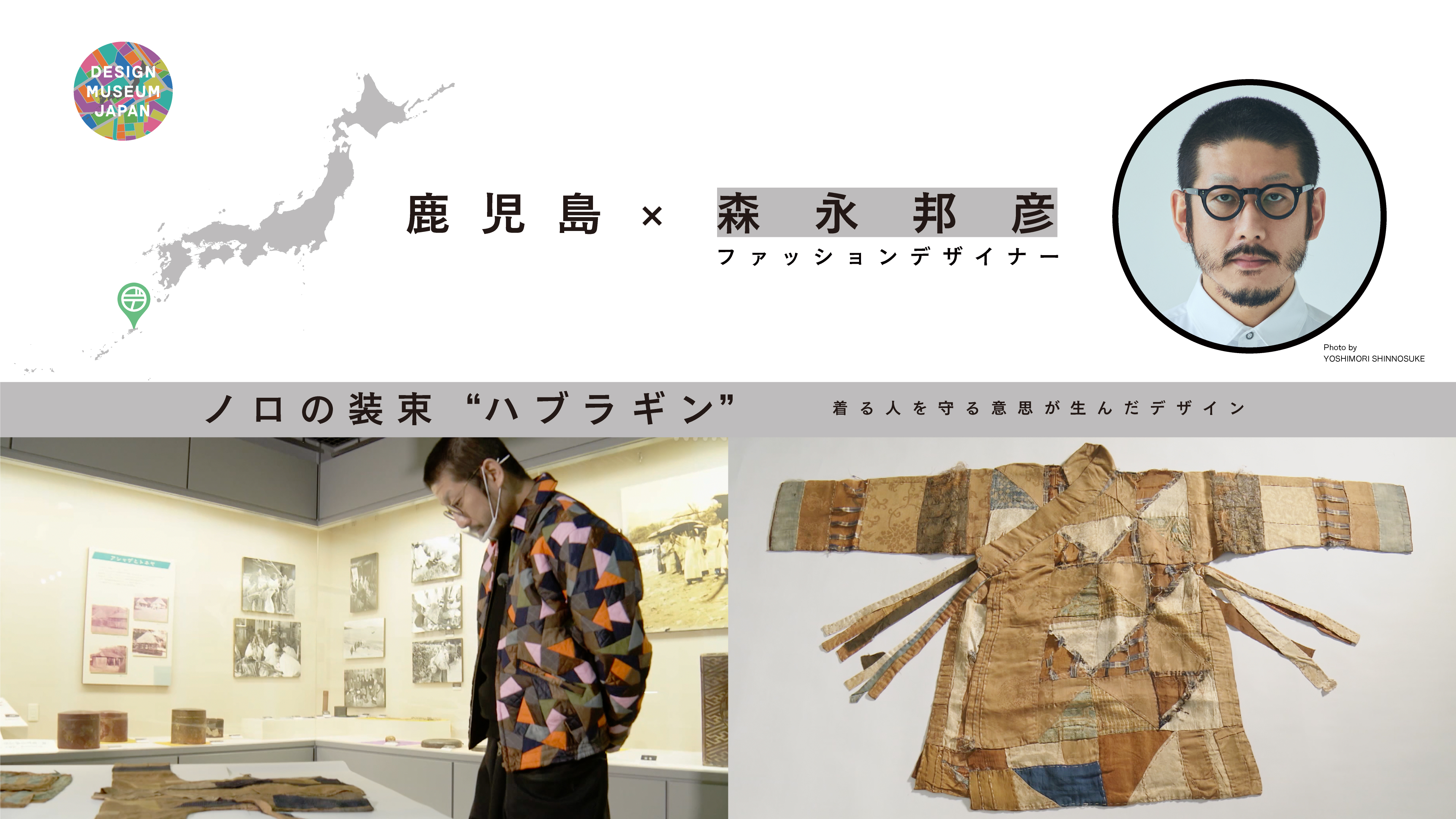The Sekishu tiles made in western Shimane are ranked with the Sanshu tiles of Aichi and Awaji tiles of Hyogo as one of the three great tilemaking traditions of Japan. The snow lies deep in the Shimane mountains and the Japan Sea coast is frequently battered by typhoons and storm waves. The tiles must withstand these harsh climatic conditions. Their reddish-brown glaze is also highly distinctive and gives the town of Omori its special atmosphere.
Naoto Fukasawa Product Designer
Sekishu Tiles

Naoto Fukasawa researches the Sekishu tiles of Shimane. He visits the town of Omori which nestles between the mountains in the south-west of Oda City, the location of the UNESCO-registered Iwami Ginzan Silver Mine World Heritage Site. The town still has many historical buildings and other cultural treasures from the Edo Period, including samurai residences and the former magistrate’s office, and is a designated conservation zone for important traditional buildings.
DESIGN TREASURE
An atmosphere generated by tiles

The distinctive reddish-brown Sekishu tiles
Photo: Kamedani Ceramics Ltd.
CREATOR

Photo by Yoshiaki Tsutsui
Naoto Fukasawa Product Designer
Born in Yamanashi Prefecture in 1956
Rather than emphasizing the designer’s individuality, Fukasawa has a reputation for quiet but powerful designs that prioritize the user’s perspective. Regarded as one of the world’s most influential designers, he has worked for more than 70 global brands and many leading Japanese companies.
Fukasawa’s designs span the broad range from daily goods and precision electronic devices to mobility aids, furniture, interiors and architecture. Fukazawa also operates his own design studio. Prizes include the Isamu Noguchi Award and Collab Design Excellence Award, and he holds the UK’s Royal Society of Arts’ honorary title of Royal Designer for Industry. Fukasawa established Super Normal with Jasper Morrison in 2006. In 2022, he set up the Design Science Foundation to delve into the links between design and science. He is curator of the Japan Folk Crafts Museum and vice-president of Tama Art University.

The town of Omori
Photo: Shimane Film Commission
Tiles that harmonize the townscape
Looking down on the town of Omori from a nearby rise, the reddish-brown dominate the rooftops. Fukasawa says the view amazed him from the moment he first saw it. “The tiles give this settlement its unity,” he says, “its life.” He continues, “I love how the public space and private lives are conjoined. This would be unsustainable if everyone didn’t play a positive role.” Fukasawa respects the townspeople for incorporating the old so well in their daily lives.
Producing and consuming locally: Clay and glaze
The tiles make full use of local materials.
One is the clay from which they are made. This is viscous and provides great plasticity.
The glaze is made from Kimachi stone, the tuffaceous sandstone* of the Kimachi district of Shinji in nearby Matsue City. This soft and easily processed stone is ground and mixed with water to produce the glaze. Fukasawa observes that the people’s harnessing of natural properties of their region produces the perfect blend with their surroundings.
*Sandstone containing volcanic tuff accumulated on the seabed.

The clay from which the tiles are made
Photo: Kamedani Ceramics Ltd.

A former Kimachi quarry
Photo: Monument Museum Kimachi Stone
Firing temperature and sturdiness
The Sekishu tiles’ hardness and sturdiness are closely due to the extremely high firing temperature of 1,350°C. With few pores and good water resistance, they are strong against rain, snow and also salt damage.
The tiles are also surprisingly heavy in the hand. “It is important to touch things to understand them,” says Fukasawa. “People think design is only about what a thing looks like, but you can’t really comprehand a design until you have touched and felt it as well.” The houses that support these heavy roofs have to be strong, too, with the result that they are also resilient.

The Sekishu tiles are highly durable and water resistant

Some things are only understood by touch
Conserving the local character
Tile-roofed houses have largely disappeared from Japan’s modern cities. This is chiefly because tiles are more labor-intensive to produce and lay, and therefore expensive, than other roofing materials.
“The townscapes of tile-roofed houses have been replaced by standardized modern buildings,” says Fukasawa. He warns, “This kind of townscape has disappeared from consciousness and experience and now every town looks the same.” The advances of mass production and standardization have brought prosperity, he says, but important things have also been lost. “As a designer, this makes me wonder what I can do to disseminate such qualities.”

Fukasawa walks in the town.


The Sekishu tiles produce a special atmosphere.
Photos: Shimane Film Commission
Where to see this design treasure
The Townscape Community Center
Iwami Ginzan Omori-cho is a district of Oda City, Shimane Prefecture. About 400 people still live in and conserve the old townscape. The former magistrate’s office is now used as the Townscape Community Center and provides a lucid introduction to the silver mine and the people’s traditional way of life.
I490 Omori-cho, Oda City, Shimane Prefecture
Go to the website for details

Photo: Shimane Tourism Federation




























